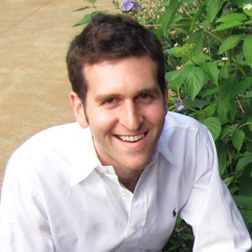
Adam GoldbergIn is the real face of the Social Network movie. TheSocial Network moivie seems to be about Facebook. But it's not about Facebook. It's about another site, Campus Network, and its founder, Adam Goldberg, a guy who came within arm's reach of a multibillion-dollar idea that ultimately slipped his grasp.
As The Social Network dramatizes, Mark Zuckerberg founded Facebook after allegedly backing out of a commitment to work on another networking site, Harvard Connection. Lawsuits ensued, and Zuckerberg ended up shelling out tens of millions of dollars in a settlement with his one-time partners. What the film doesn't mention are all the other college social networks that Facebook shoved aside as it expanded across the country. Of those sites, perhaps the greatest threat to Facebook's dominance was Campus Network, then called CU Community after Columbia University, where it was founded.
"If you talk to Mark, he'll be the first to tell you he thought CU Community was the biggest competition that Facebook ever had," says Goldberg, now 26 years old and living in New York City. While I was unable to confirm that Zuckerberg agrees with this statement?the Facebook CEO and the company's PR reps didn't respond to requests for an interview?it is true that Facebook and CU Community were running neck and neck for a brief moment in Internet history. Facebook had Harvard, CU Community had Columbia, and both were mulling plans for expansion. Only one site would survive. It wasn't Adam Goldberg's.Goldberg got the idea for Campus Network in 2003, during his freshman year at Columbia's school of engineering. As president of his class, he heard a lot of complaints about the university's lack of community spirit. Over the summer, he wrote a simple script for a social network for engineering students. The site let users share personal information, post photos, write journal entries, and comment on one another's posts. In just a few weeks, Goldberg says, three-quarters of engineering students had profiles. Over winter break, he rebranded the site CU Community and opened the site to all undergraduates in January. Goldberg says that most Columbia students signed up in just over a month.
On Feb. 4, Facebook launched. "At first I was like, Oh my God, they copied my Web site," says Goldberg. Unlike Zuckerberg's Harvard Connection adversaries, however, the CU Community founder quickly changed his mind. "I saw it was totally different. It had an emphasis on directory functionality, less emphasis on sharing. I didn't think there was that much competition."
As of early 2004, Goldberg's social network was a lot more advanced than Mark Zuckerberg's. The first incarnation of Facebook?known as The Facebook back then?let users post a photo and basic biographical information. It let them "friend" and "poke" each other. But that was about it. Fancier tools like photo sharing and Groups and the Wall didn't come till later. Meanwhile, CU Community already had blogging and cross-profile commenting. Facebook's simplicity and the fact that it was available only to Harvard students made it easy for Goldberg to dismiss. "We were the Columbia community, they were Harvard," he says.

The illusion of safety crumbled a month later when Facebook opened its doors to students at Stanford, Yale, and Columbia. While Facebook grew exponentially at Harvard and Stanford, growth was slower at Columbia?in part, says Goldberg, because CU Community was already so entrenched. Some Columbia students launched a campaign to "Google bomb" Facebook by linking the search term "cucommunity ripoff" to TheFacebook.com and "worthless safety school" to Harvard.edu. The Columbia Spectator called the effort "marginally successful." (I wrote for the Spectator at the time.) Despite this online agitprop, Facebook continued to grow. That summer, it overtook CU Community as the most popular social network on campus.
That spring, Goldberg started instant messaging with Mark Zuckerberg. In March, he met with Zuckerberg and Sean Parker, the Napster co-founder and early Facebook investor, at a Starbucks on 96th Street. According to Goldberg, Parker tried to persuade Zuckerberg to acquire CU Community. Zuckerberg didn't tip his hand, but Goldberg says they kept in touch. In June, he says, Zuckerberg invited him to Palo Alto, Calif., where the Facebook crew had moved to work on the site. Goldberg flew out and stayed with Zuckerberg and pals for two weeks. "I think we went to one Stanford party," he says. There was "no crazy partying or drinking," Goldberg says, despite what The Social Network may suggest.
The invitation to come to Palo Alto was basically a job offer, says Goldberg. "They didn't give me a clear salary and working terms. It was, Come out here and work with us." He remembers that Zuckerberg even offered to pay for Goldberg's flight.
Goldberg said no, thanks. "I really believed that Campus Network was a better product," he says. He spent the summer of 2004 coding a new site, rebranded it Campus Network, and launched it at five other schools in September. But Facebook was expanding, too. "We made a strategic decision to go after Big 12 schools," says Wayne Ting, who ran business and legal operations for Campus Network. "But when we went to the Big 12, Facebook immediately went to the Big 12, too. They were clearly monitoring our activity."
No comments:
Post a Comment